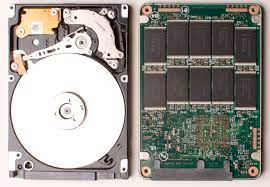Sometimes we accidentally click the “Delete important data or notifications” button. Almost everyone has experienced this. But there is always a way to retrieve erased files from hard disk. This means that deleted files are never lost; they are still stored on your hard drive or flash drive, and all deleted files can be recovered. Deleted data can only be recovered through a fast data recovery process. This is because every time new data is written to the hard drive, the likelihood of recovering lost data decreases.
The best way to restore erased data from hard drive is to restore it as soon as possible. Do not install after a week of intensive computer use. Because these files still exist after deletion. This means that the files are still in place even if Windows has marked the location as “free.”. The likelihood of recovery is reduced if Windows overwrites data, which can happen if the computer is used heavily or there is not enough space on the hard drive.
Sometimes, installing data recovery software on the hard drive where the deleted data is stored will also allow you to overwrite the data. Therefore, to avoid this problem, the software must be installed on a separate drive.
Common Hard Drive Data Loss Situations
- Data Deletion is the Most Common Scenario for Losing Data on a Hard Drive
Typically, to delete files (documents, pictures, videos, emails, sounds, or files), press the Delete key and then empty the trash without viewing the saved content, or use the Shift + Delete key combination to delete. files from your computer files. Then you realize that you need to recover deleted files and you are faced with data loss.
- Formatting is Another Possible Loss of Data on a Hard Drive
In general, when you format your computer when installing Windows or format a non-bootable volume or external hard drive, you should first back up the saved content. Data loss occurs when there is no backup and the hard drive is accidentally or intentionally formatted.
- Hard Drive Failure
When the system software crashes, Windows causes a blue-screen display (BSOD) and the data on the internal hard drive becomes inaccessible. Additionally, if the application software hangs or becomes unresponsive, ending the task using Task Manager will not save the application’s unsaved data, resulting in data loss.
- Hardware Failure is an Inevitable Situation Where Data is lost on the Hard Drive
Hard drives automatically fail at the end of their lives. However, drives can fail prematurely due to other reasons, such as mishandling, power surges, fire, or water, which can damage sectors, damage internal components, or render the drive unusable. Data loss due to severe physical damage to the hard drive is inevitable, but in such situations, hard drive backup can be a lifesaver.
Don’t panic if you experience data loss on your internal or external hard drive due to any of the above or other reasons. Use the following methods to restore erased data from hard drive:.
Best Experts Suggest Solutions to Retrieve Erased Files from Hard Disk
If you are not sure about the cause of data loss and all simple attempts to recover deleted files from your hard drive have failed, you can completely rely on Solution, which is one of the best suggested Hard Disk File Recovery software to help you. Quickly recover lost files. and the speed of recovering deleted data is high.
This software can recover commonly deleted or permanently deleted video files from an unlimited number of hard drives. It is quite capable of recovering deleted recordings from CCTV cameras. This software automatically detects free partitions after scanning the disk. In many cases where data has been permanently deleted, this software can also recover data from NTFS and FAT file formats on the hard drive.
Retrieve Permanently Erased Files from Hard Drive in Few Clicks
- Download hard drive data recovery software and install it on your Windows system.
- Click the “Scan” or “Scan Formatted” button to recover files from the hard drive.
- You can easily preview the fully recovered data on the hard drive recovery software panel.
- Finally, click the “Save” button to save the recovered files to your hard drive.
Important Tips: If you want to know how to recover all deleted data from Solid State Drive SSD, then you can use the simple SSD data recovery software, which also supports lost files recovery from all-size SSD drives
Manual Way to Retrieve Erased Files from Hard Disk
Below are some effective and safe ways to restore erased data from hard drive in the Windows 7, 8, 10, 11, etc. system.
Important: Do not continue to use this drive or add new data, as this may overwrite any files deleted from the “free” storage. However, do not use the computer too often. This will cause data recovery to fail.
Method 1: Use with Recycle Bin
If you use the Delete button to delete files on your hard drive, check the Recycle Bin first. If you clean it up and want to recover deleted files, try the following methods:.
- Double–click the trash icon to open it.
- Find the deleted files in the recycle bin. Then right-click on these files and select “Recover” to restore the deleted files to their original location. Or go to the Manage tab and click Restore Selected Items.
Method 2: Using Previous Versions
If you enable the System Restore Point or File History feature, you can recover deleted files from previous versions. It continues to work even after emptying the trash.
- Launch Windows Explorer. Locate the folder containing the deleted files, right-click and select Properties > Previous Versions.
- Select the folder version based on the modification date, and then click the “Recover” button to recover deleted files from your hard drive.
Method 3: From the File History Option
- Go to Control Panel > System and Security > File History and select Recover files using File History.
- Click the left or right arrow to find the backup you want to restore, then click the green button to restore it to its original location. .
Tip: To restore deleted files to a new location, click the Settings icon in the top-right corner and select Recover Here. You can then type in your location.
Final Conclusion
Retrieve erased files from hard disk (internal or external) by moving deleted files to the recycle bin, in-app recovery, or backup history. If none of the above methods work, use Professional for Windows to recover data from your computer or external hard drive. This DIY software is compatible with Windows 10 and supports NTFS, exFAT and FAT files. Use a reliable data recovery system in case of physical data loss.


